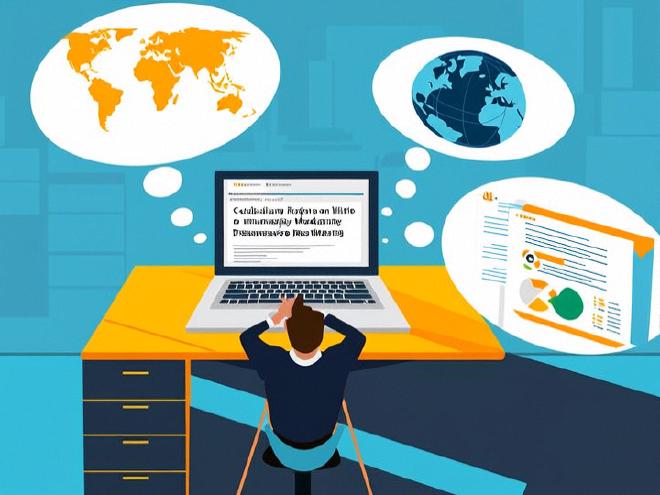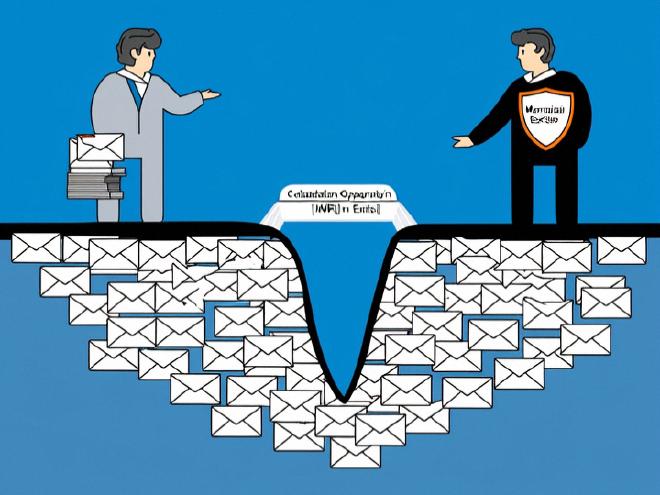How to Write Professional Academic Collaboration Emails
Table of Contents
In academic research, establishing effective collaboration is a crucial strategy for advancing your work and expanding your scholarly influence. Yet, the first step in building such relationships often begins with a professional, clear, and persuasive academic collaboration email. Unfortunately, many researchers find that their collaboration requests go unanswered—or receive low response rates—simply because their emails lack clarity, are poorly structured, or fail to highlight key points.
This article will systematically break down the essential elements of crafting a high-quality academic collaboration email, from designing an impactful subject line to composing a thoughtful closing signature. We’ll also provide practical templates and writing tips to help you significantly improve communication efficiency and boost your chances of successful collaboration.
I. Why Is a Well-Crafted Academic Collaboration Email So Important? #

In today’s fast-paced academic environment, professors and researchers often receive dozens of emails daily. If your message doesn’t grab the recipient’s attention within seconds, it may easily get overlooked—or even deleted outright. A carefully crafted collaboration email can:
- Showcase your professionalism and respect
- Clearly communicate your collaborative intent and its value
- Increase the likelihood that the recipient will read it thoroughly and respond positively
More importantly, it sets the stage for a strong first impression that could lead to long-term partnerships.
II. The Core Structure of an Academic Collaboration Email (6 Key Sections) #
1. A Precise and Powerful Subject Line #
✅ Correct Examples:
“Collaboration Proposal on Renewable Energy Modeling with Dr. Li”
“Request for Collaboration: Machine Learning in Medical Imaging”
❌ Incorrect Examples:
“Hello” / “Important Request” / “Need Your Help”
Key Tips:
- Include keywords like “Collaboration,” “Proposal,” or “Research”
- Mention the specific research area or project name if possible
- Avoid vague terms and emphasize the purpose and relevance
👉 Goal: Ensure the recipient instantly understands who you are and why you’re reaching out from the email list.
2. A Polite and Formal Salutation #
Use a respectful yet professional greeting:
- If you know the recipient’s name: “Dear Professor Zhang,” or “Dear Dr. Wang”
- If you’re unsure about their gender or title: “Dear Dr. Chen” is a safer choice
- Avoid overly casual greetings like “Hi,” “Hey,” or “Dear Sir/Madam”
📌 Pro Tip: Check the recipient’s university website or Google Scholar to confirm their exact title.
3. A Concise and Engaging Opening Paragraph #
Get straight to the point by introducing yourself, stating your affiliation, and explaining why you’re reaching out.
Example Sentence Patterns:
“My name is Wei Liu, a postdoctoral researcher at Tsinghua University specializing in climate change modeling. I am reaching out to express my admiration for your recent work on carbon capture technologies and to explore potential collaboration opportunities.”
Key Elements to Include:
- Your full name + institutional affiliation + position
- Reference the recipient’s research achievements to demonstrate genuine interest
- Clearly state your intention to collaborate
⚠️ Avoid lengthy self-introductions or generic compliments like “Your work is amazing!”
4. A Clear and Specific Proposal for Collaboration #

This is the heart of your email, so make sure it’s clearly structured and focused. Address three key questions:
- What exactly do you want to collaborate on? (e.g., a research topic, data sharing, joint funding applications)
- Why did you choose this particular scholar? (How does their expertise align with your needs?)
- What unique value can you bring to the table? (e.g., resources, technical skills, access to datasets, student support)
Example Paragraph:
“I am currently leading a project on AI-driven early diagnosis of Alzheimer’s disease using fMRI data. Given your expertise in neuroimaging analysis and machine learning frameworks, I believe a collaboration could significantly enhance our model accuracy. We have access to a dataset of over 1,000 scans and are seeking methodological partners to co-develop novel feature extraction techniques.”
✅ Key Success Factors:
- Propose specific, actionable forms of collaboration
- Emphasize mutual benefits rather than one-sided requests
- Highlight existing foundations (e.g., data, funding, team members)
5. A Thoughtful Call to Action #
Don’t leave the recipient guessing about next steps. Take the initiative by suggesting a concrete action they can take.
Common options include:
- Requesting a brief virtual meeting (via Zoom or Teams)
- Sharing a preliminary proposal or research abstract for review
- Asking if they’d be open to discussing the idea further
Recommended Phrases:
“Would you be open to a 20-minute call next week to discuss this idea further? I’d be happy to share a brief project outline in advance.”
“If this aligns with your interests, I would appreciate the opportunity to send you a short collaboration proposal.”
⏰ Timing Tip: Propose a time slot within the next 1–2 weeks to keep things concise and avoid ambiguity.
6. A Polished and Professional Closing #
End your email on a courteous note, reflecting your respect and professionalism.
Standard Format:
Thank you very much for your time and consideration. I look forward to the possibility of working together.
Best regards,
Wei Liu
Postdoctoral Researcher
School of Environmental Science
Tsinghua University
Email: wei.liu@tsinghua.edu.cn
ORCID: 0000-0002-1234-5678
Website: https://researchgate.net/profile/Wei_Liu
📌 Signature Suggestions:
- Include your full name, position, and institutional affiliation
- Provide essential contact details (email address required)
- Optionally add links to your ORCID profile, personal website, LinkedIn, or ResearchGate page
III. 5 Practical Tips to Boost Response Rates #
-
Personalize Each Email—Avoid Generic Mass Mails
Tailor every message to the specific recipient. Referencing their recent publication is one of the most effective ways to grab their attention. -
Keep It Concise—Aim for 150–250 Words
Academic professionals are busy, so the shorter and more focused your email is, the more likely it is to get a response. -
Skip Attachments When Sending Initial Emails
Don’t attach PDFs or PowerPoint presentations in your first outreach. Instead, mention that detailed materials can be shared later. -
Proofread Carefully for Grammar and Spelling Errors
Use tools like Grammarly or Microsoft Word’s built-in proofreading features to ensure your language is polished and error-free. -
Set Up a Follow-Up Plan
If you don’t hear back within 7–10 days, send a gentle follow-up email:“Just following up on my previous message about potential collaboration in renewable energy systems. Please let me know if this might be of interest.”
IV. General Research Email Template (Ready to Customize) #
Subject: Collaboration Opportunity in [Specific Field] – [Your Name], [Your Institution]
Dear Dr. [Last Name],
My name is [Full Name], a [Position] at [Institution], where my research focuses on [Brief Description]. I have been following your work on [Specific Topic], particularly your paper titled “[Paper Title]” published in [Journal], which I found highly insightful.
I am currently working on a project related to [Your Project], and I believe your expertise in [Their Expertise] could greatly contribute to advancing this research. Specifically, we are exploring [Brief Description of Idea], and I would welcome the opportunity to discuss a potential collaboration, such as co-authoring a study or applying for joint funding.
Would you be open to a brief call in the coming weeks to explore this further? I’d be happy to share more details at your convenience.
Thank you for your time and contributions to the field. I look forward to hearing from you.
Best regards,
[Your Full Name]
[Position]
[Department], [University]
Email: [your.email@university.edu]
[Optional: ORCID, Website, LinkedIn]
V. Final Thoughts: Turn Every Email Into a Gateway to Collaboration #
Writing a successful academic collaboration email isn’t just about conveying information—it’s also an opportunity to project your professional image. By crafting emails that are precise in their subject lines, sincere in their introductions, specific in their proposals, and clear in their calls to action, you can dramatically increase your chances of receiving positive responses.
Remember: The best collaborations start with respectful, professional, and valuable communication.
So, take this guide into account and refine your next research collaboration email today! 🎯